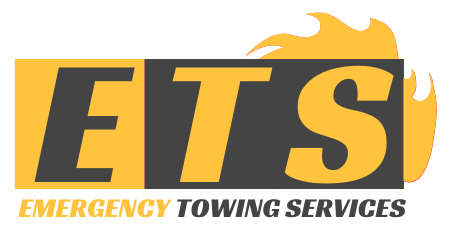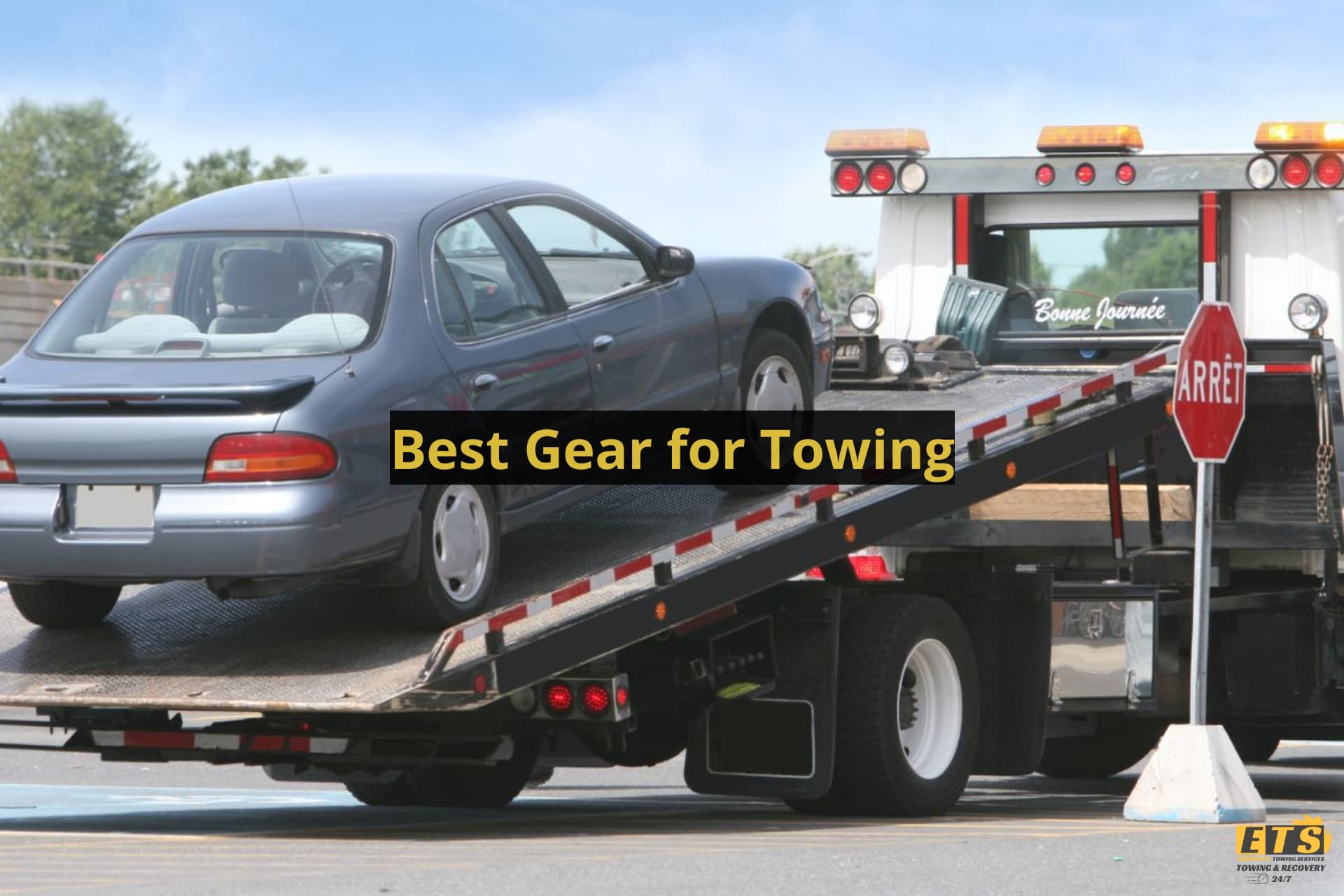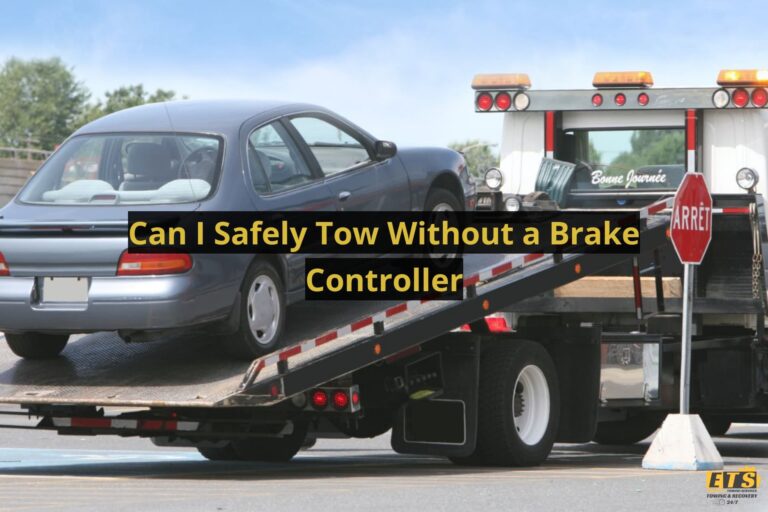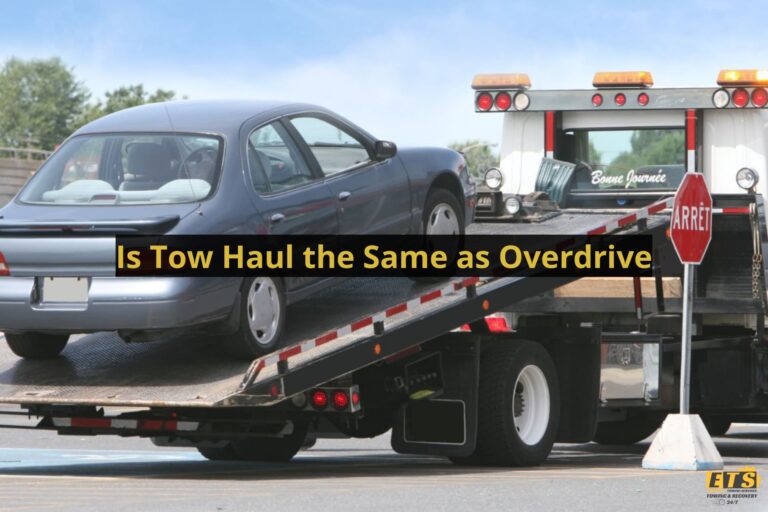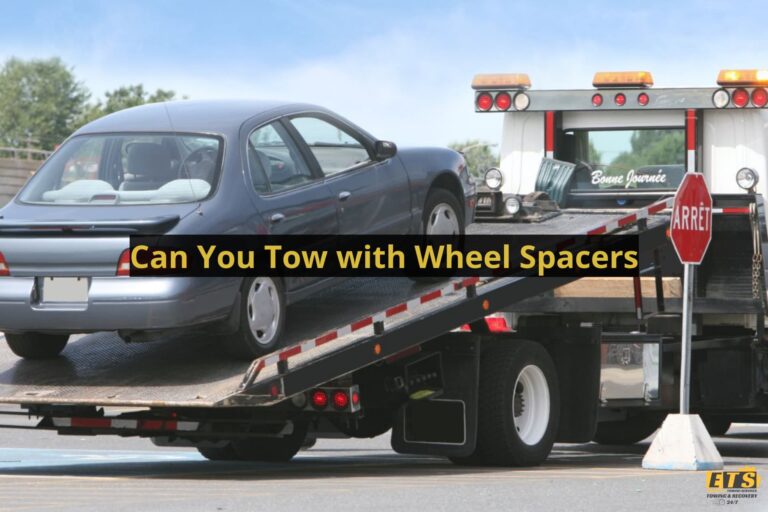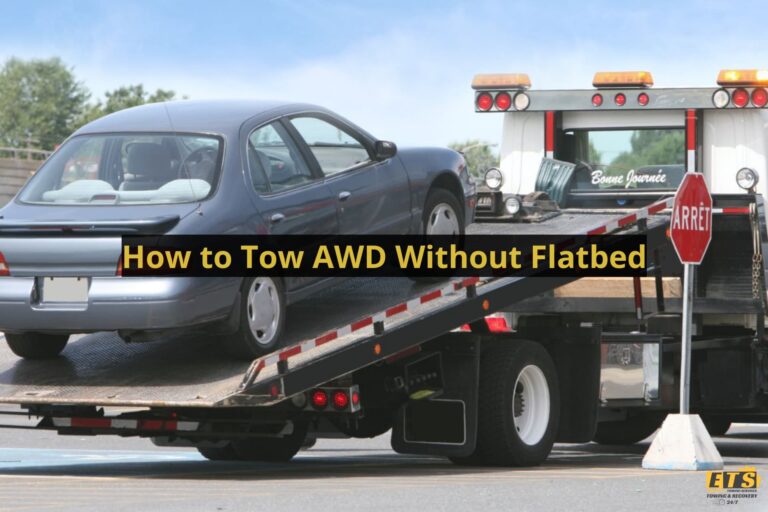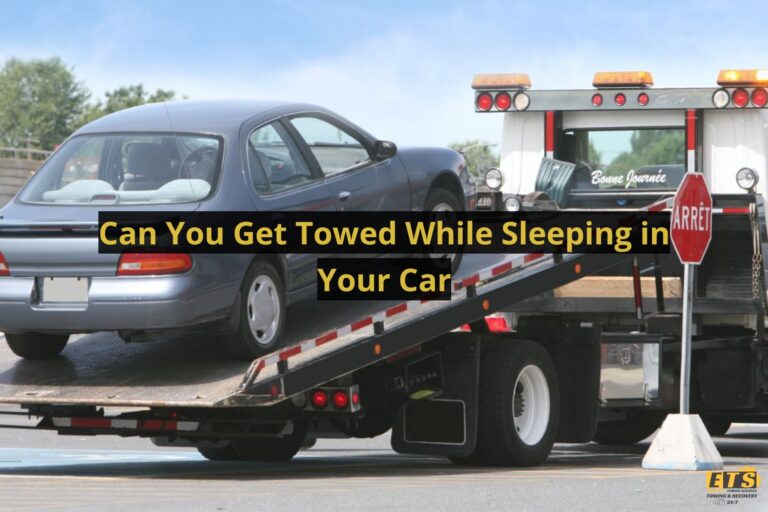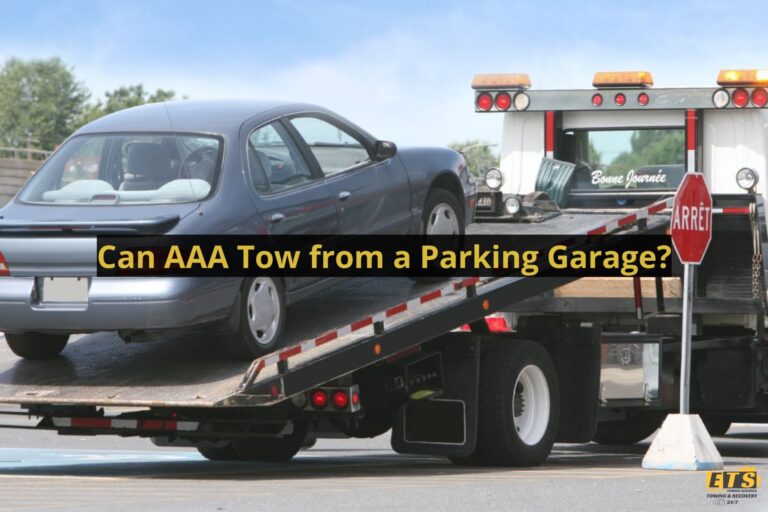What’s the Best Gear For Towing
The information presented in this article is provided for general informational purposes only, and may not reflect the current laws or legal developments. This article does not constitute legal advice, and the reader should not act on the information contained in this article without first seeking professional counsel. We make no guarantees about the accuracy, completeness, or adequacy of the information contained in this article. The reader assumes all risks and liabilities associated with any actions taken as a result of reading this article. To obtain legal advice on your specific matter, please contact a qualified legal professional.
Are you planning a road trip and need to tow your boat, camper or trailer? It’s important to have the right gear for towing to ensure safety on the road.
With so many options available, it can be overwhelming to choose which equipment is best suited for your needs. In this article, we will explore some of the best gear for towing that will make your journey smoother and safer.
From hitches and brake controllers to weight distribution systems and mirrors, we’ll cover everything you need to know before hitting the road with your load in tow. So buckle up and let’s dive into the world of towing gear!
Trailer Hitches: Types And Uses
As you embark on your journey of towing, it’s important to equip yourself with the best gear possible. The trailer hitch is a crucial component in this process, as it connects your vehicle to whatever you’re towing. Choosing the right type of hitch can make all the difference in ensuring a safe and successful trip.
There are several types of trailer hitches available, each designed for specific uses. For example, weight distribution hitches are ideal for those who need to tow heavy loads. These hitches help distribute the weight evenly between the front and rear axles of your vehicle, which can improve stability and control while driving.
However, even if you choose the right type of hitch, there are still common installation mistakes that should be avoided. This includes not properly securing the hitch to your vehicle or failing to use safety chains.
It’s important to carefully read and follow all manufacturer instructions when installing your hitch to ensure maximum safety and effectiveness. By choosing the appropriate trailer hitch and avoiding common installation mistakes, you’ll reap the benefits of weight distribution and enjoy a smoother ride while towing.
Don’t underestimate the importance of this seemingly small piece of equipment – it could mean the difference between a successful trip and one filled with unexpected complications.
Brake Controllers: Ensuring Safe Stops
In the previous section, we discussed different types of trailer hitches and their uses. Now let’s move on to another essential component for safe towing: brake controllers.
A brake controller is an electronic device that connects your tow vehicle’s braking system with your trailer’s brakes. It ensures that both systems work in tandem when you press the brake pedal, allowing for smoother and safer stops.
Brake controllers come in several styles, including time-delayed and proportional models. Brake controller installation requires wiring connections between the tow vehicle and trailer, as well as mounting the unit itself. Proper installation is crucial for optimal performance and safety.
Regular brake controller maintenance should also be performed to ensure it remains functioning correctly. This includes checking wires for any signs of wear or damage, calibrating the controller periodically, and replacing batteries if necessary. By taking care of your brake controller, you can help prevent accidents while towing.
Weight Distribution Systems: Balancing Your Load
Load distribution techniques are essential when towing heavy loads. One of the most popular load distribution techniques is using weight distribution hitches. These hitches help balance out the weight of your trailer and distribute it evenly across your vehicle’s axles, which can improve handling and stability.
Weight distribution hitches work by redistributing some of the tongue weight from the back axle to the front axle of your tow vehicle. This helps keep both axles loaded properly, which can reduce sway and bouncing while driving.
Additionally, a balanced load also makes braking easier since all wheels have equal traction on the road.
When selecting a weight distribution hitch, it’s important to choose one that matches your setup’s specific needs. Different models will have different maximum capacities and features like adjustable shanks or built-in sway control systems.
Make sure to read reviews and consult with professionals before making a purchase to ensure you get the best hitch for your towing needs.
Towing Mirrors: Better Visibility On The Road
After balancing the load with a weight distribution system, it’s time to focus on better visibility while towing. Did you know that 33% of accidents involving trailers are caused by limited visibility? That’s why investing in towing mirrors is crucial for safe and efficient towing.
There are two types of towing mirrors: adjustable and fixed. Adjustable mirrors allow you to customize the view according to your vehicle and trailer size. Fixed mirrors, on the other hand, offer stable support but may not provide as much flexibility as adjustable ones. Consider your needs before choosing which one to purchase.
Installing towing mirrors can be tricky, but following these tips will make the process easier. First, clean the area where you’ll attach the mirror thoroughly. Second, position the mirror correctly so that it covers blind spots without obstructing your view of traffic behind you. Finally, double-check everything before hitting the road to ensure maximum safety.
Improving visibility is essential when towing any type of trailer. Whether you choose adjustable or fixed mirrors, proper installation is key to ensuring they work effectively. With these tips in mind, you can have peace of mind knowing that you’re equipped with the best gear for safer towing experiences.
Trailer Tires: Choosing The Right Ones
When it comes to towing, choosing the right trailer tires is crucial for ensuring a safe and smooth ride. There are several factors to consider when selecting the best tires for your trailer, such as load capacity, speed rating, and weather conditions. However, two of the most important considerations are tire pressure and tread depth.
Proper tire pressure is essential for maintaining stability on the road while towing. Overinflated or underinflated tires can cause excessive wear and tear on the treads, leading to blowouts or other dangerous situations. It’s important to check tire pressure regularly using a reliable gauge and adjust it accordingly based on manufacturer recommendations.
Another critical factor in choosing trailer tires is tread depth. Tread depth refers to how deep the grooves in the tire surface are, which directly affects traction and handling on wet roads. As a general rule of thumb, deeper treads provide better grip and performance in wet conditions than shallower ones. Checking tread depth periodically can help prevent skidding or hydroplaning while towing.
To summarize, selecting high-quality trailer tires that are properly inflated and have adequate tread depth can make all the difference in having a successful towing experience.
To ensure optimal performance and safety on the road, be sure to follow these helpful tips:
- Choose tires with an appropriate load capacity and speed rating
- Check tire pressure regularly using a reliable gauge
- Monitor tread depth levels at least once per year
- Consider investing in specialized winter or off-road tires if necessary
- Replace worn-out or damaged tires promptly to avoid accidents
- It is important to have all four tires replaced at the same time to ensure even wear and optimal performance.
Backup Cameras: Making Hitching Easier
Backup cameras are becoming increasingly popular because they make hitching so much easier. There are a variety of cameras to choose from, such as wireless and wired versions, so you can find one that meets your needs.
Installation of these cameras is relatively straightforward, making them a great upgrade for anyone who tows. Knowing the benefits of backup cameras, the different types available, and how to install them can help make hitching easier and safer.
Benefits Of Backup Cameras
If you’re looking to make hitching easier and safer, consider installing backup cameras.
The benefits of having a backup camera for towing are numerous. First and foremost, they provide an extra set of eyes when backing up or hitching your trailer. You no longer have to rely solely on your mirrors or someone outside the vehicle directing you.
Another benefit of backup cameras is that they can help prevent accidents while reversing. With a clear view behind you, it’s much easier to avoid hitting obstacles in your path, whether it be another car or a low-hanging branch. This added safety feature can give drivers peace of mind as they navigate challenging terrain or tight parking spaces.
Lastly, installation of backup cameras is relatively easy and cost-effective – especially compared to other high-tech towing gear. Many cameras can be installed without professional assistance and come with step-by-step instructions. Plus, the cost of adding a backup camera to your setup is minimal compared to the potential costs associated with an accident caused by poor visibility while backing up.
So why not invest in this small but powerful tool?
Types Of Backup Cameras
As previously discussed, backup cameras can make hitching easier and safer. But did you know that there are different types of backup cameras available in the market?
One option is a wireless connectivity camera, which eliminates the need for cords or wires running from your trailer to your vehicle. This type of camera connects to a monitor inside the car via Bluetooth or Wi-Fi and provides clear visibility behind the vehicle.
Another type of backup camera is one with night vision capabilities. These cameras use infrared technology to provide additional visibility when backing up in low light conditions. With improved night vision capabilities, drivers can have added peace of mind while navigating through dark areas or campsites.
Installing a backup camera with either wireless connectivity or night vision capabilities does not require professional assistance and comes with step-by-step instructions. The cost of adding these features to your setup may be minimal compared to other high-tech towing gear but offers significant benefits such as added safety, convenience, and peace of mind on the road.
Installation Of Backup Cameras
Now that we’ve talked about the different types of backup cameras available, let’s move on to discussing their installation.
While some may prefer professional assistance when it comes to installing new equipment in their vehicle and trailer setup, adding a backup camera is relatively easy and can be done by following step-by-step instructions.
One of the benefits of installing a backup camera yourself is that you’ll save money on labor costs. This means that even with additional features such as wireless connectivity or night vision capabilities, the cost of adding these features to your towing gear will likely still fall within an affordable price range.
Additionally, installing the camera yourself ensures that it is set up correctly for your specific needs.
When it comes to best practices for installing a backup camera, make sure to follow all provided instructions carefully and double-check connections before securing everything into place.
It’s also important to properly mount the camera so that it provides clear visibility behind your vehicle while hitching or backing up.
With a little patience and attention to detail, anyone can successfully install a backup camera onto their tow vehicle without needing professional help.
Trailer Jacks: Lifting And Lowering Your Load
As you set out on your towing journey, it’s important to have the right gear at hand. A trailer jack is an essential tool for lifting and lowering your load with ease, ensuring that everything stays safely secured in place. This small but mighty piece of equipment can make all the difference when it comes to a smooth and stress-free towing experience.
When choosing the right jack for your needs, there are a few things to consider. First, think about the weight capacity required for your particular load – this will determine what type of jack you need. Next, look at features such as height adjustability and stability. Finally, don’t forget to factor in maintenance tips to keep your jack working smoothly over time.
With so many options available on the market today, finding the perfect trailer jack can be overwhelming. To help simplify the process, we’ve put together a handy table comparing some of our top picks based on key criteria such as weight capacity and price point. Take a look below to find out which model might be best suited to your specific towing needs:
| Jack Model | Weight Capacity (lbs) | Height Range (inches) | Price |
|---|---|---|---|
| Bulldog Sidewind Swivel Trailer Jack | 5,000 | 15-24 | $50-$75 |
| Reese Towpower Farm Jack | 7,000 | 20-40 | $80-$100 |
| Pro Series Square Tubular Trailer Jack | 10,000 | 12-25 | $120-$150 |
| CURT Topwind A-Frame Trailer Jack | 2,000 or 5,000 depending on model chosen | Up to 23 inches depending on model chosen | $30-$45 |
By taking the time to choose the right trailer jack for your towing needs and keeping up with proper maintenance tips like regular lubrication and storage in dry areas between uses), you can ensure that your load stays safe and secure throughout even the longest journeys. So don’t wait – invest in a high-quality trailer jack today and take your towing game to the next level!
Trailer Lights: Staying Visible And Legal On The Road
LED vs incandescent trailer lights is a common debate among those who tow trailers. LED lights are more energy-efficient and last longer, but they also tend to be more expensive upfront than incandescent lights.
Incandescent lights, on the other hand, are cheaper initially but require frequent replacements due to shorter lifespans.
Despite their differences, both types of lights can experience similar issues while in use. Problems such as blown fuses, corroded connections, or faulty wiring can cause either type of light to fail.
Troubleshooting these problems may involve checking the electrical system for damage or replacing bulbs that have burned out.
To prevent any issues with trailer lights from occurring while towing, it’s important to perform regular maintenance checks before hitting the road. This includes inspecting all lighting components for signs of wear and tear, ensuring proper connection between the vehicle and trailer, and carrying spare bulbs and fuses just in case.
By taking these precautions and choosing the right type of light for your needs and budget, you’ll keep yourself visible and legal on the road when towing your gear.
Conclusion
When it comes to towing, having the right gear is essential for a safe and successful trip. From trailer hitches to brake controllers, there are many tools available that can make the experience smoother and more secure.
For example, let’s say you’re planning on taking your boat out on the water this summer. You’ve got everything packed up and ready to go, but before hitting the road, you realize you need some new trailer tires.
After doing some research, you discover that selecting the appropriate tire size based on load capacity is crucial for maintaining stability while towing. With this knowledge in mind, you confidently choose a set of high-quality tires that will keep your boat securely attached as you navigate winding roads or encounter rough terrain.
No matter what type of vehicle or cargo you’re hauling, investing in top-notch towing equipment can save time, money, and most importantly- ensure everyone stays safe along the way.
So if you’re getting ready for an upcoming adventure with a heavy load in tow, take some time to evaluate your gear and upgrade anything that may be lacking- after all, it could mean the difference between smooth sailing and bumpy roads ahead!
